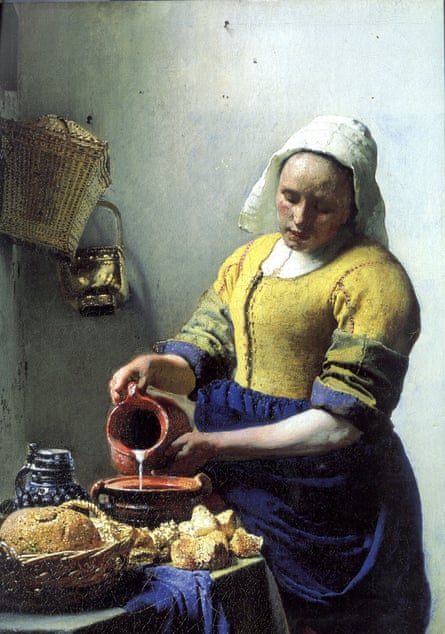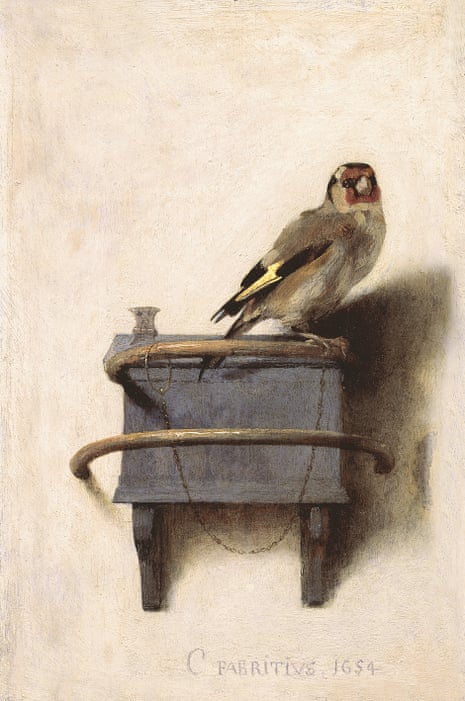It’s just a painting of a chained bird on its perch, but The Goldfinch by Carel Fabritius has become a pop icon. When I last saw it at the Mauritshuis in The Hague it was singled out from other paintings, roped off, almost like the Mona Lisa. Now it is to be exhibited at the Scottish National Gallery. Will the crowds there from 4 November match the 200,000 people who queued to see it at the Frick Collection in New York in 2014?
The popularity of this 17th-century Dutch painting has been hugely enhanced by Donna Tartt’s novel The Goldfinch, whose narrator steals it when he is 13 years old. Yet the true story of The Goldfinch and the man who painted it is stranger than fiction.
The novel and the real life of Fabritius have one thing in common: an explosion. Tartt’s character walks off with The Goldfinch (it’s a small painting) after a bomb goes off at the Metropolitan Museum in New York. The key to the true, tragic story behind the painting is, as it happens, a picture of an explosion’s aftermath that hangs in the National Gallery in London.
Egbert van der Poel’s painting A View of Delft After the Explosion of 1654 depicts a city laid to waste under a sky full of cloud and smoke. The cosy world of a Dutch town has been turned inside out. A body is being carried over a canal bridge. Houses stand ruined, their charred rafters open to the cold sky. A row of trees have all had their leaves blasted off. Their skeletal bleakness is terrifying. As shocked citizens help the wounded and search the rubble, birds fly darkly against the iron clouds.
Among the victims in catastrophe was the painter Carel Fabritius. Born in 1622, this gifted artist was killed in 1654 when a magazine containing at least 90,000 pounds of gunpowder blew up in the heart of Delft. His life was taken, at the age of 32, by this absurd, random accident. The Dutch republic was armed to guard its independence – as Rembrandt’s The Night Watch (1642) illustrates – but the explosion in Delft did not happen in a battle or invasion. It was a meaningless disaster. Someone was careless with a match.

The casual cruelty of Fabritius’s death oddly illuminates his art. The Goldfinch sits on its perch in a Dutch house, chained by the foot, a pet with nowhere to go. The date on the painting – 1654 – reveals he painted it in the year he was killed. But even without knowing that, we feel its enigmatic melancholy. Dutch 17th-century art has an eye for the overlooked, the ordinary, the taken for granted. In 1660, Vermeer, the other genius who worked in Delft, painted a servant pouring milk: he looked hard at the battered kitchen wall, the flow of thick white milk out of a red jug. Fabritius concentrates on the yellow, black and brown of feathers against a creamy wall, the elusive being of an animal as it perches there, thinking unknowable thoughts on its gilded rail.
Human beings are similarly bored and listless in Fabritius’s art. In his 1652 painting A View of Delft, now on display in the National Gallery, a musical instrument seller sits musing at his stall near a canal bridge that swoops in a grey emptiness towards the city centre. There is no one about. No customers. The lonely salesman has plenty of time to brood and think. Just like the goldfinch, he is in effect tied here – in his case by his job – with nothing to do.
Is Fabritius the first artist who ever painted boredom? Ennui would later become a theme of French art in the age of Manet and Degas. We think of it as a quintessentially modern state of the soul. Yet this young Dutch artist was painting ennui in the 1650s. It is the mood that makes The Goldfinch such an odd and haunting masterpiece.
Then, with no warning, he was killed in a stupid accident. Perhaps the nameless musical instrument seller sitting at his stall was killed, too, just at the moment he was about to sell a lute. For a great artist of reality like Fabritius can show us that life is more marvellous than fiction.

Comments (…)
Sign in or create your Guardian account to join the discussion